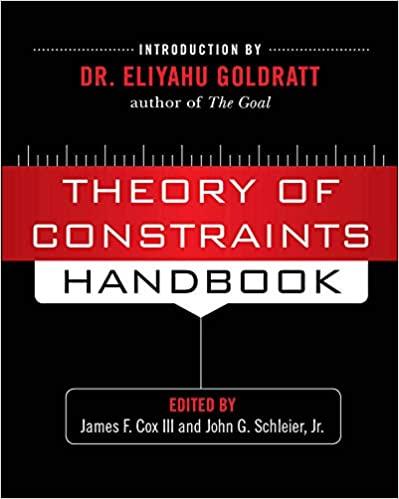Question
More info. Can we estimate what is being spent in 3 years from this garden? I just need help making up a senario. The family
More info. Can we estimate what is being spent in 3 years from this garden? I just need help making up a senario. The family shops at a local grocery store 3 miles from their home. The gas station is 10 miles from their home. The cost of gas is $4 per gallon, and their car gets 25 miles per gallon. If the family goes to get gas 10 miles away, then 7 miles to the grocery store from the gas station assuming its in the same direction, which is a total of 20 miles. If it is in the opposite direction then it would be 26 miles. cost difference vs. having a garden with the cost of $250
Hello I am struggling to understand how to start this sample question on financial scoring of projects using discounted cash flow (NPV), payback period and cost-benefit ratios.
Scenario Overview:
A family (two adults, two children) prepares to plant a garden for fall harvest. One adult (Jack) is a project manager in his work life, and decides to manage the project in accordance with the knowledge gained as a student. The other adult (Jill) has imposed a constraint that the project costs must not exceed USD$250 for supplies, equipment rental or purchase, and/or maintenance.
The cost of labor is not included, but the parents do intend to estimate the number of hours for everyone, including the children, Lavern (age 7) and Shirley (age 10).
The family lives in a housing development with specific covenants monitored by the Home Owners Association (HOA) representative (Ms. Setback), including restrictions on backyard landscaping. The family shops primarily at the local grocery store (about 3 miles from their home) and buys gasoline (petrol) from the local filling station (about 10 miles from their home). The cost of gas is currently USD$4 per gallon. Their car gets about 25 miles per gallon. They also purchase water from the city municipal supply.
Level 1 of the WBS is the final deliverable or overall project outcome, often referred to as the project name. The project manager has decided to break down the work by project phase at level 2.
Jack plans to manage the garden project by phases (against the principles he learned). The phases include: Garden Plot Preparation, Crop Planting, Crop Harvest, and Garden Plot Winterization. In addition to these specific project phases, Project Management work is also a level 2 component of the WBS.
The garden is considered ready for planting when the soil is tilled and all rocks are removed, and sufficient barriers are installed to keep rabbits or other animals from entering the garden area.
The garden must fit in a 150 square foot patch of land located in the back yard, about 30 feet from the water standpipe on the side of the home. The HOA covenants mandate a 6 foot setback from their property line.
The garden should be planted before June 15th and harvested by 31 October, according to advice provided by the local garden shop owner (Henrick Gibbons).
Jill wants the garden production to include at least five different crops planted, to provide nutritious meals for the family. Of the five crops, her harvest requirements include green beans, at least one yellow vegetable, and one red vegetable. The garden must not include brussel sprouts and yellow squash, a requirement imposed by Jack because he can't stand their taste. The children eat anything except broccoli.
For the garden to be a success, and given the potential to lose the entire crop, damage caused by insects and rabbits must be minimized. The local garden shop provides pesticides and also has advice on integrated pest management plans. Weeds must be managed. The weather can be unpredictable. The biggest risk the garden faces is insufficient water, so if drought conditions prevail during the germination period, the plants won't have a chance.
The garden is ready for winterization when all crops have been harvested; plants (vines, stalks, etc.) have been removed; soil is prepared for winter; and any animal (e.g., rabbit) barriers used during the garden project have been removed and stored.
The parents have agreed to share responsibilities for accepting work packages and determining what is success for the project. Ms. Setback has agreed to visit, as needed or when asked by Jack or Jill, to complete the inspection of the location with respect to property line setbacks.
I have to write a business case in 300 words:
financial scoring of projects using discounted cash flow (NPV), payback period and cost-benefit ratios in Lesson 2. An "A" level of effort for the business case would be to include one of the financial analysis techniques AND a non-financial (intangible) set of reasons for choosing to pursue the family garden project. Intangible reasons can have value, particularly if the financial costs and time to produce a garden are more than just buying vegetables at a local store.
How do I start? What do I need to do, can you break this down in dummy steps so I understand?
Step by Step Solution
There are 3 Steps involved in it
Step: 1

Get Instant Access to Expert-Tailored Solutions
See step-by-step solutions with expert insights and AI powered tools for academic success
Step: 2

Step: 3

Ace Your Homework with AI
Get the answers you need in no time with our AI-driven, step-by-step assistance
Get Started


